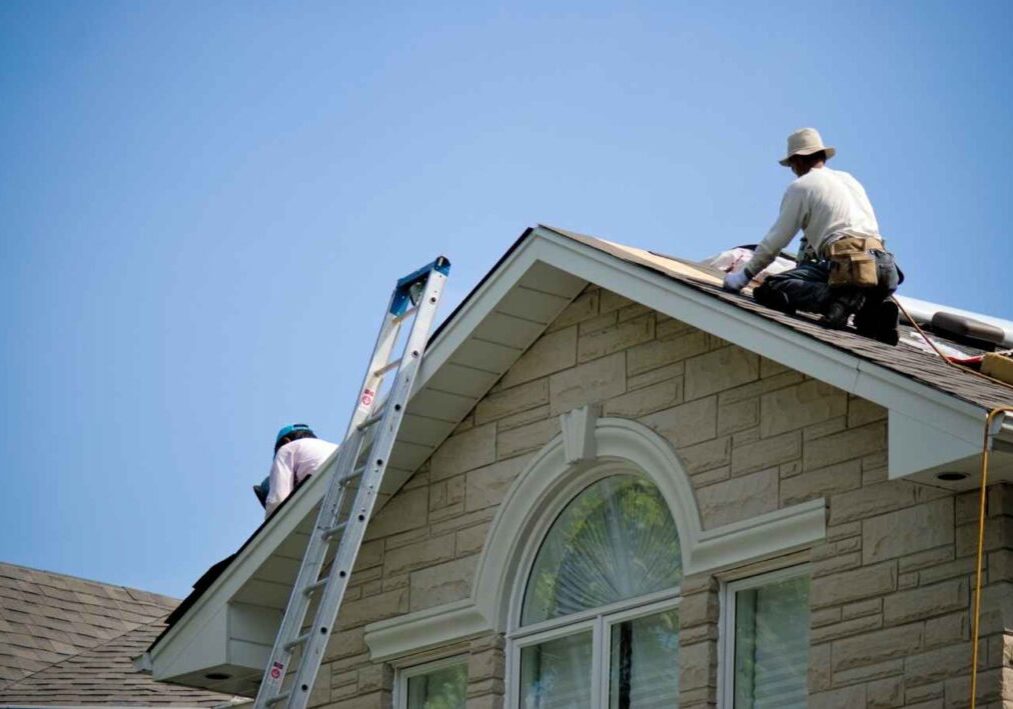Year-End Roof Inspection Checklist for Residential Roofing
As the year comes to an end, it’s time to look up, literally. As a steadfast protector against the weather, your roof requires some love and attention. Join us on a journey through a complete year-end roof inspection checklist that guarantees your house stays warm throughout the changing seasons and works in harmony with the experience of roofing inspection services and residential roofing specialists. Let’s get started on the checklist and make sure your roof is ready for whatever nature has in store!
Why Year-End Roof Inspections Matter
1. Preparing for Winter:
Winter can be tough on your roof, with snow, ice, and freezing temperatures. A thorough year-end inspection ensures your roof is ready to withstand the winter challenges and keep your home warm.
2. Identifying Issues Early:
Early detection of roof issues can save you from costly repairs down the road. Year-end roof inspections help pinpoint potential problems before they escalate, allowing for timely and proactive solutions.
3. Extending Roof Lifespan:
Performing routine checks and upkeep enhances the resilience and lifespan of your roof. A properly serviced roof not only serves as a protector against weather conditions but also as a long-term financial advantage.
Year-End Roof Inspection Checklist
1. Gutter Inspection:
The Reason: Blocked gutters can result in water stagnation, which tends to harm both the roof structure and the building’s foundational integrity.
Items for Inspection:
- Remove debris and leaves from gutters and downspouts.
- Ensure gutters are securely attached to the roof edge.
2. Shingle Check:
Why: Damaged or missing shingles can compromise your roof’s ability to keep water out.
Items for Inspection:
- Look for cracked, curled, or missing shingles.
- Check for signs of granule loss on asphalt shingles.
3. Flashing Examination:
Why: Damaged flashing can lead to leaks, especially around chimneys, skylights, and vents.
Items for Inspection:
- Inspect flashing for rust, cracks, or gaps.
- Ensure flashing is properly sealed around roof penetrations.
4. Attic Inspection:
The Reason: Your attic serves as a revealing indicator of your roof’s condition, offering valuable clues about ventilation and insulation issues.
Items for Inspection:
- Inspect for signs of leaks, such as water stains or mold.
- Check insulation for adequate coverage.
5. Ventilation Assessment:
Why: Proper ventilation is crucial for regulating temperature and moisture in the attic.
Items for Inspection:
- Ensure vents are free of debris.
- Check for signs of condensation or moisture.
6. Chimney Inspection:
Why: Chimneys are vulnerable points for leaks if not properly maintained.
Items for Inspection:
- Inspect the chimney for damaged bricks or mortar.
- Check that the chimney cap is in good condition.
7. Tree Limb Patrol:
Why: Overhanging tree limbs can pose a threat during storms and cause damage to your roof.
Items for Inspection:
- Trim back any tree limbs that are close to the roof.
8. Check for Critter Intruders:
The Reason: The entry of wildlife looking for refuge can inflict significant damage to your roof and attic area.
Items for Inspection:
- Look for signs of animal entry, such as chewed or damaged roofing materials.
- Ensure vents and openings are secured with screens.
9. Inspect for Moss and Algae:
Why: Moss and algae growth can compromise the integrity of your roof.
Items for Inspection:
- Clean away any moss or algae growth.
- Consider applying treatments to inhibit future growth.
10. Evaluate the Overall Roof Structure:
Why: A comprehensive assessment of the entire roof ensures no issues are overlooked.
Items for Inspection:
- Check for signs of sagging in the roof structure.
- Inspect for any signs of water damage on the interior ceiling.
The Role of Roofing Inspection Services and Residential Roofing Experts
1. Professional Assessment:
Roofing inspection services and residential roofing experts play a crucial role in providing a professional assessment of your roof’s condition. They have the expertise and knowledge to identify any underlying issues that may not be visible to the untrained eye. Additionally, they can offer valuable recommendations and solutions to ensure the long-term integrity and durability of your roof.
2. Timely Repairs and Maintenance:
Roofing inspection services can identify potential problems early on, allowing for timely repairs or maintenance to prevent further damage and costly repairs in the future. Residential roofing experts can provide recommendations on the best course of action to address any issues found during the assessment.
3. Long-Term Planning:
Roofing experts can provide insights into the overall health of your roof and help you plan for long-term maintenance and potential upgrades. They can assess the current condition of your roof and identify any potential issues that may arise in the future. By creating a long-term maintenance plan, you can stay ahead of any problems and ensure that your roof remains in optimal condition for years to come. These experts can advise you on potential upgrades or improvements that can enhance the performance and efficiency of your roof.
Conclusion: A Roof Ready for Every Season
Consider this year-end roof inspection checklist a gift to your home as we wrap up the year. A well-maintained roof not only protects your investment but also provides a safe retreat for you and your family. Don’t be afraid to employ the help of roofing inspection services and residential roofing specialists for a thorough review. With a little care today, your roof will be well-prepared for whatever the seasons may bring. Here’s to a cosy and secure home for the coming year!
Share this post:



